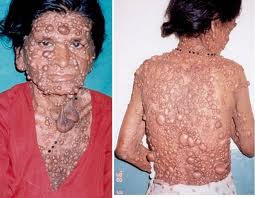Makindo Medical Notes"One small step for man, one large step for Makindo" |
|
|---|---|
| Download all this content in the Apps now Android App and Apple iPhone/Pad App | |
| MEDICAL DISCLAIMER: The contents are under continuing development and improvements and despite all efforts may contain errors of omission or fact. This is not to be used for the assessment, diagnosis, or management of patients. It should not be regarded as medical advice by healthcare workers or laypeople. It is for educational purposes only. Please adhere to your local protocols. Use the BNF for drug information. If you are unwell please seek urgent healthcare advice. If you do not accept this then please do not use the website. Makindo Ltd. |
Neurofibromatosis Type 2
-
| About | Anaesthetics and Critical Care | Anatomy | Biochemistry | Cardiology | Clinical Cases | CompSci | Crib | Dermatology | Differentials | Drugs | ENT | Electrocardiogram | Embryology | Emergency Medicine | Endocrinology | Ethics | Foundation Doctors | Gastroenterology | General Information | General Practice | Genetics | Geriatric Medicine | Guidelines | Haematology | Hepatology | Immunology | Infectious Diseases | Infographic | Investigations | Lists | Microbiology | Miscellaneous | Nephrology | Neuroanatomy | Neurology | Nutrition | OSCE | Obstetrics Gynaecology | Oncology | Ophthalmology | Oral Medicine and Dentistry | Paediatrics | Palliative | Pathology | Pharmacology | Physiology | Procedures | Psychiatry | Radiology | Respiratory | Resuscitation | Rheumatology | Statistics and Research | Stroke | Surgery | Toxicology | Trauma and Orthopaedics | Twitter | Urology
Related Subjects: |Neurofibromatosis Type 1 |Neurofibromatosis Type 2 |Tuberous sclerosis |Café-au-lait spots |McCune Albright syndrome
There are at least two mechanisms for secondary hypertension in patients with Neurofibromatosis Type 2 (NF2) — Phaeochromocytoma and Renal artery stenosis.
About
- Neurofibromatosis Type 2 (NF2) is a genetic disorder characterized by the development of benign tumours, especially affecting the nervous system.
- It is autosomal dominant and affects approximately 1 in 40,000 individuals.
- NF2 is much less common than Neurofibromatosis Type 1 (NF1).
- There is often a family history of NF2, though some cases arise from de novo mutations.
Aetiology
- The NF2 gene is located on chromosome 22, encoding a tumour suppressor protein called Merlin (also known as Schwannomin).
- Merlin is involved in maintaining the structure of the cytoskeleton and preventing uncontrolled cell growth, particularly in nerve cells.
- Loss of function of the NF2 gene leads to the development of various tumours in the central and peripheral nervous systems.

Clinical Features
- Bilateral Vestibular Schwannomas (Acoustic Neuromas): These are the hallmark of NF2 and can lead to hearing loss, tinnitus, and balance issues due to involvement of the eighth cranial nerve.
- Juvenile posterior subcapsular lenticular opacity: A cataract that occurs at an early age, leading to potential blindness.
- Other brain and spinal cord tumours such as meningiomas, ependymomas, astrocytomas, and gliomas are frequently observed in NF2 patients.
- Spinal tumours like intramedullary gliomas and ependymomas occur with increased frequency.
- Cutaneous features: Though less pronounced than in NF1, patients may develop cutaneous neurofibromas and subcutaneous nodules.
- Other clinical signs include plexiform neuromas and optic nerve gliomas, which may lead to vision loss.
Associations
- Pulmonary Fibrosis: A rare but recognized complication in NF2.
- Hypertrophic Cardiomyopathy: Cardiac involvement in some patients.
- Skeletal Abnormalities: Scoliosis and local gigantism of a limb may be seen.
- Secondary Hypertension: May occur due to Phaeochromocytoma or Renal artery stenosis.
- Orbital Haemangiomas: Benign vascular lesions affecting the orbit, potentially leading to visual impairment.
Management
- Supportive Care: Given the chronic nature of the disease, management is focused on symptom control and addressing specific complications such as hearing loss, visual impairment, and tumour growth.
- Regular Monitoring: MRI is the preferred imaging modality for monitoring brain, spine, and peripheral nerve tumours.
- Auditory Brainstem Implants (ABI): These may be considered in cases of severe hearing loss due to bilateral vestibular schwannomas.
- Genetic Counseling: NF2 is inherited in an autosomal dominant pattern, so genetic counseling is important for affected families.
- Secondary Hypertension Management: Screen for Phaeochromocytoma and Renal artery stenosis if secondary hypertension is suspected. Treat appropriately with antihypertensives and possible surgical intervention for Phaeochromocytoma.
References
Cases — Neurofibromatosis Type 2 (NF2)
- Case 1 — Bilateral Vestibular Schwannomas 👂: A 23-year-old woman presents with progressive bilateral hearing loss and imbalance. Exam: bilateral sensorineural hearing loss, absent corneal reflexes. MRI: bilateral vestibular schwannomas. Diagnosis: NF2 (pathognomonic feature). Management: Regular MRI monitoring, hearing aids/cochlear implants, surgery or radiosurgery for tumour growth; genetic counselling.
- Case 2 — Spinal Cord Tumours 🧠: A 29-year-old man reports progressive leg weakness and numbness. Exam: spastic paraparesis, sensory level at T8. MRI spine: multiple intradural schwannomas and meningiomas. Family history: father had “brain tumours” in his 30s. Diagnosis: NF2 with multiple spinal tumours. Management: Neurosurgical referral for decompression; regular neuroimaging; physiotherapy and MDT rehab.
- Case 3 — Juvenile Cataracts 👓: A 16-year-old girl presents with painless, progressive visual blurring. Ophthalmology exam: posterior subcapsular cataracts. Further workup due to family history of NF2 reveals a unilateral vestibular schwannoma on MRI. Diagnosis: Early NF2 presenting with ocular involvement. Management: Cataract extraction; ongoing surveillance with MRI brain/spine; genetic testing and family screening.
Teaching Commentary 🧠
NF2 is a rare, autosomal dominant disorder due to NF2 gene mutation on chromosome 22, causing loss of tumour suppressor protein merlin. Key features: - Bilateral vestibular schwannomas (diagnostic hallmark) → progressive hearing loss, tinnitus, imbalance. - Other tumours: meningiomas, ependymomas, schwannomas elsewhere. - Ocular: early cataracts, retinal hamartomas. Dx: MRI brain/spine, genetic testing. Mx: surveillance + surgery/radiosurgery for tumours; hearing support; cataract surgery; genetic counselling. Prognosis: variable, but progressive neurological disability common by mid-adulthood.